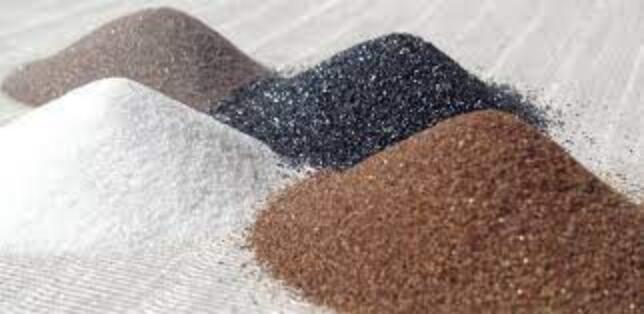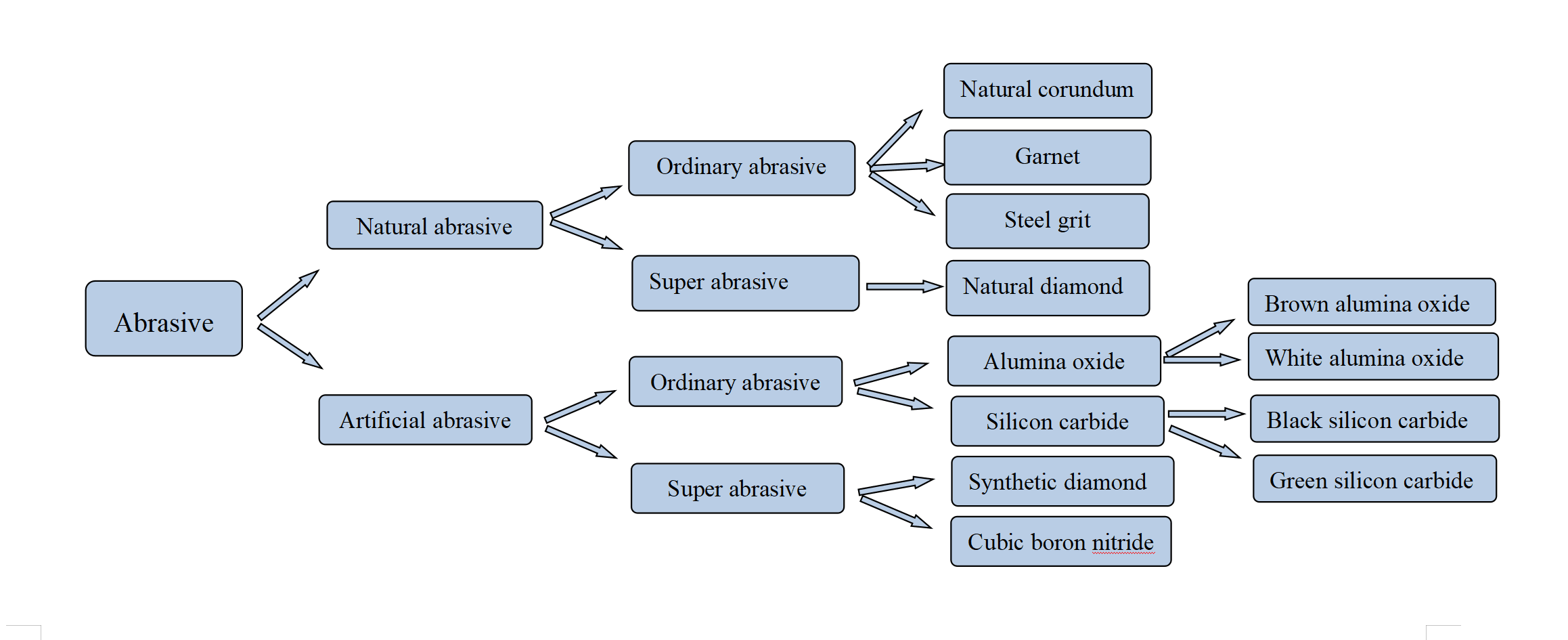HOME > NEWS

Why do you need abrasives?
Abrasives are solid materials with high hardness and certain mechanical strength, which appear as granular materials after crushing. In the grinding process, abrasives are usually used as tools or media to machine parts to meet certain requirements.
Abrasive is the main raw material for manufacturing abrasive tools, which is called "the teeth of industry", and can also be directly used for grinding, cutting, polishing and sandblasting. It is widely used in the processing of metal parts, alloy knives, wood, minerals, plastics, etc. Abrasive grinding can be used to obtain high-precision, high-finish surface parts.
Abrasives can be divided into natural abrasives and artificial abrasives according to the way they are formed.Natural abrasives refer to natural formations. Common natural abrasives in the industry include quartz, garnet and natural diamond.Artificial abrasives are the most widely used abrasives in the industry, mainly including brown alumina oxide, white alumina oxide, green silicon carbide and black silicon carbide.At present, more than ten kinds of abrasives can be produced, among which the abrasives of alumina oxide series are mostly derived from brown alumina oxide and white alumina oxide.
Among artificial abrasives, there are also differences between "general abrasives" and "super abrasives". The above are general abrasives. Super abrasives include artificial diamond, cubic boron carbide (CBN), etc. Super abrasives are harder than general abrasives. According to the composition and performance, it can be divided into non-metallic abrasives and metallic abrasives. Non-metallic abrasives include brown alumina oxide, white alumina oxide, silicon carbide, glass beads, ceramic beads, plastic shot sand, etc. Metal abrasives include steel shot, steel grit, cutting shot, copper shot, zinc shot, iron shot, aluminum shot, stainless steel shot, etc. Non-metallic abrasives and metallic abrasives have overlapping areas of application.

Abrasive application
In the 21st century, artificial alumina oxide and silicon carbide are still the most widely used abrasives, accounting for more than two-thirds of all abrasives. They are widely used in the manufacture of various abrasives and continue to develop in non-grinding applications.Grinding wheels are also essential tools for sharpening knives and cutting hard materials. In the automobile manufacturing industry, the tight fit between the piston ring and the cylinder, the valve and the valve seat, etc., can only be guaranteed by processing with abrasives and abrasive tools.
In ship hulls, bridges, etc. for rust removal and corrosion protection, abrasives are fast and effective media. It plays a key role in the anti-skid and wear resistance of floors, pavements, floors, etc. Abrasives can also be used as refractory materials and are widely used in steel, glass and other smelting industries.
Abrasives are the foundation of the industry, and the global abrasives market will continue to grow steadily with increasing demand.
Abrasive production process
Since the 1970s, artificial abrasives have been produced in large quantities, the most important of which are silicon carbide and alumina oxide.
Black silicon carbide is made of quartz sand, petroleum coke and high-quality silica as the main raw materials, and is smelted at high temperature in a resistance furnace.The production method of green silicon carbide powder is basically the same as that of black silicon carbide, but the requirements for raw materials are different.Green silicon carbide is made of petroleum coke and high-quality silica as the main raw materials, adding salt as an additive, and smelting at high temperature in a resistance furnace.
Brown alumina oxide, commonly known as emery, is commonly used in industry to heat and melt bauxite in an electric arc furnace; white alumina oxide is made of alumina, which is formed by melting at high temperature and cold, and is mostly used as an abrasive for heat-sensitive metals;
Black alumina oxide, also known as low-alumina corundum, is a gray-black crystal with α-Al2O3 and iron spinel as the main mineral phases, which is obtained by smelting bauxite in an electric arc furnace. The characteristic is that the content of Al2O3 is low, and there is a certain amount of Fe2O. Commonly used for machining castings and steel;
Pink alumina oxide, a pink/rose-coloured abrasive, aluminium oxide and moderate chromium oxide fused in an electric arc furnace.
Monocrystalline Fused alumina SA is made of alumina powder. It is suitable for several materials to form single crystal through high temperature special smelting process, which is blue.
Semi-friable Brown Fused Alumina. It is made of bauxite and alumina powder and melted in an electric arc furnace. Especially suitable for the manufacture of coated abrasives.
The above information shows that the abrasives market has great potential. More importantly, there have been significant advancements in abrasive production technology. Efficiency has improved significantly over the last century, and abrasives are now widely used in every aspect of our lives.